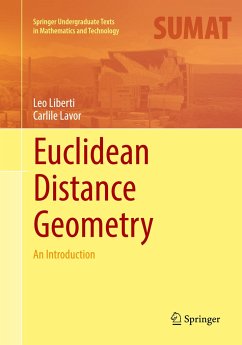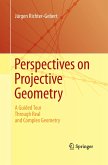This textbook, the first of its kind, presents the fundamentals of distance geometry: theory, useful methodologies for obtaining solutions, and real world applications. Concise proofs are given and step-by-step algorithms for solving fundamental problems efficiently and precisely are presented in Mathematica®, enabling the reader to experiment with concepts and methods as they are introduced. Descriptive graphics, examples, and problems, accompany the real gems of the text, namely the applications in visualization of graphs, localization of sensor networks, protein conformation from distance data, clock synchronization protocols, robotics, and control of unmanned underwater vehicles, to name several. Aimed at intermediate undergraduates, beginning graduate students, researchers, and practitioners, the reader with a basic knowledge of linear algebra will gain an understanding of the basic theories of distance geometry and why they work inreal life.
"The book under review is an invitation to a field with a subject as old as the ancient Greeks, with relatively new name - Euclidean Distance Geometry (EDG). ... The book addresses readers at undergraduate level, researchers and practioners ... . The textbook ends with a generous appendix covering all the prerequisites needed for reading the book which are quite modest." (Martin Lukarevski, zbMATH 1492.51002, 2022)
"The authors' intended audience is undergraduate students. The book is intensely mathematical. It would probably be more suitable for graduate students in mathematics than undergraduates." (Anthony J. Duben, Computing Reviews, May 14, 2019)
"The authors make use of the computing system Mathematica to show step-by step proofs. Aimed at students with a solid foundation in linear algebra, this text would be appropriate for upper-level undergraduates or graduate students." (J. A. Bakal, Choice, Vol. 55 (12), August, 2018)
"This textbook on distance geometry covers some relevant theory with several algorithms presented in Mathematica. ... The featured problems explore graph visualization, sensor networks, molecule topology and more. Beginning graduate students and researchers with a suitable foundation in graph, vector, and matrix theory as well as linear algebra will gain from the modeling explorations here." (Tom Schulte, MAA Reviews, March, 2018)
"The authors' intended audience is undergraduate students. The book is intensely mathematical. It would probably be more suitable for graduate students in mathematics than undergraduates." (Anthony J. Duben, Computing Reviews, May 14, 2019)
"The authors make use of the computing system Mathematica to show step-by step proofs. Aimed at students with a solid foundation in linear algebra, this text would be appropriate for upper-level undergraduates or graduate students." (J. A. Bakal, Choice, Vol. 55 (12), August, 2018)
"This textbook on distance geometry covers some relevant theory with several algorithms presented in Mathematica. ... The featured problems explore graph visualization, sensor networks, molecule topology and more. Beginning graduate students and researchers with a suitable foundation in graph, vector, and matrix theory as well as linear algebra will gain from the modeling explorations here." (Tom Schulte, MAA Reviews, March, 2018)








